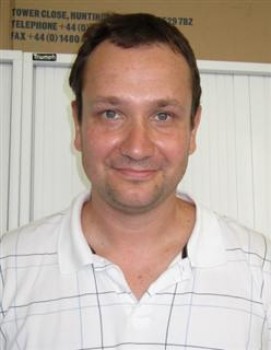Events
Multiscale modelling based on a hydrodynamic analogy: bridging molecular dynamics and stochastic Navier-Stokes equations

Sergey Karabasov
| Date: | Tuesday 15 October 2013 14:30 - 15:30 |
| Location: | Nanoforce Seminar Room (Joseph Priestley Building) |
SPEAKER: Sergey Karabasov, one of our Senior Lecturers at QM.
TITLE: Multiscale modelling based on a hydrodynamic analogy: bridging molecular dynamics and stochastic Navier-Stokes equations
WHERE AND WHEN: Nanoforce Seminar Room, Tuesday Oct 15, 2.30pm
WHO MAY BE INTERESTED: The talk will be of particular interest to people involved in research on microscale & nanoscale phenomena, particularly biomolecules and their interaction with flow. Students – particularly postgraduate- are welcome, and strongly encouraged to attend.
ABSTRACT: Multiscale problems are encountered in many areas of unsteady fluid dynamics modelling. One important component is a technique for consistently coupling coarse-grain scales with fine-grain scales in space and time that may differ by many orders of magnitudes within the same computational framework. For bridging the small-scale and the large-scale physics, the so-called acyclic techniques, where the information is exchanged one way only, e.g., from small scale to large scale for instance, have been found sufficient in some cases. An example of the acyclic approach from turbulent jet noise modelling based on a modern acoustic analogy will be provided. In other cases, however, a fully coupled (cyclic) approach is needed. The main part of the talk will be devoted to a new approach developed by the authors for computationally coupling atomistic simulations with continuum fluid dynamics equations with the goal to simulate large biomolecules (proteins) in solvent (water). The approach is based on a hydrodynamic analogy with two-phase flows. One ‘phase’ of the model is based on a continuum fluid dynamics model (e.g., stochastic Navier Stokes) and the other one is based on pure atomistic representation (e.g., classical molecular dynamics). The ‘phases’ are coupled with preservation of macroscopic conservation laws. The interaction is governed by a numerical ‘zoom-in’ parameter to allow for a fully atomistic representation in the region of interest and a continuum representation where atomistic details are unnecessary. An example of numerical implementation of the coupling framework will be provided for the simulation of liquid argon at equilibrium conditions. Efficient multi-space-time numerical algorithms are important to realise the full benefit of multiscale modelling, and one example of those will be provided for a ‘toy problem’ of resolving Brownian fluctuations in the area of interest of the Stokes flow.
| Contact: | Lorenzo Botto |
| Email: | l.botto@qmul.ac.uk |
| Website: |

